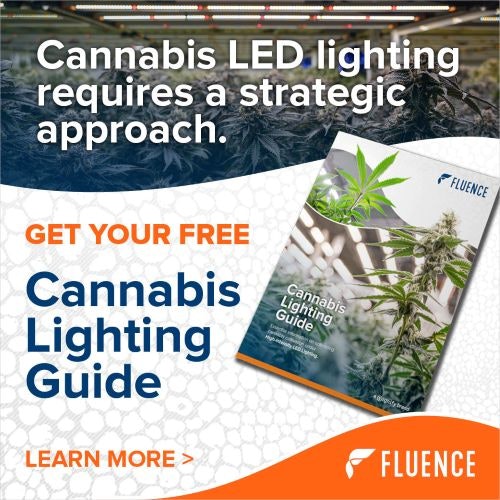From intensity measurements to product types, cultivators have many considerations for selecting lighting options for their cannabis grows. Mike Anderson, LC IESNA, Director of Specialty Lighting at EYE HORTILUX® (who has 24-plus years of lighting experience) provides answers to common inquiries cultivators may have before choosing which lamps are best for their business.

1. Is PAR the ideal measurement for indoor plant cultivation?
PAR (photosynthetically active radiation), also known as PPF (photosynthetic photon flux) measurements, is not a good metric to consider when choosing lighting for indoor plant growth. PPF micromole measurements do not fully represent the total amount of energy produced by a grow light, nor do they give any indication to the quality of light produced by the lamp.
2. What should growers consider when choosing lighting for their operation?
Intensity, spectrum, uniformity and efficiency. Intensity in terms of wattage, not micromoles. Spectral quality of the light for different stages of plant growth. Uniformity of light to make sure the fixture is focusing light evenly across the plant canopy. Efficiency in terms of input wattage to the light fixture versus watts of energy delivered to the plants. Many growers only look at intensity, and that limits their capabilities to produce higher-quality crops.
3. Why is spectrum important?

The spectral quality of a grow lamp can have drastic impacts on the quality of your yields. Tests have shown grow lights with the same intensity of PPF, but different spectrums can produce greater-quality crops and higher yields. This means you can reduce wattage and have higher-quality plants. Spectrum can also create a dramatic difference in aromas, flavors and the chemical composition of your plants.
4. Will my plants grow well under LED lights?

LED will grow plants, but the question should be, “how effectively?” There is a wide range of inconsistencies with results produced by LED. According to our internal studies, the intensity of LED lacks penetrating power and uniform light distribution over the canopy when compared to traditional light sources. So while they work, they are not matching HID’s capability, yet.
5. Is color temperature relevant to growing?
Kelvin temperature has no relation to light spectrum, light quality or plant growth. It is used only to describe color appearance of a light source to the human eye. Grow lamps can have the same color temperature, yet can have very different spectral distributions.














